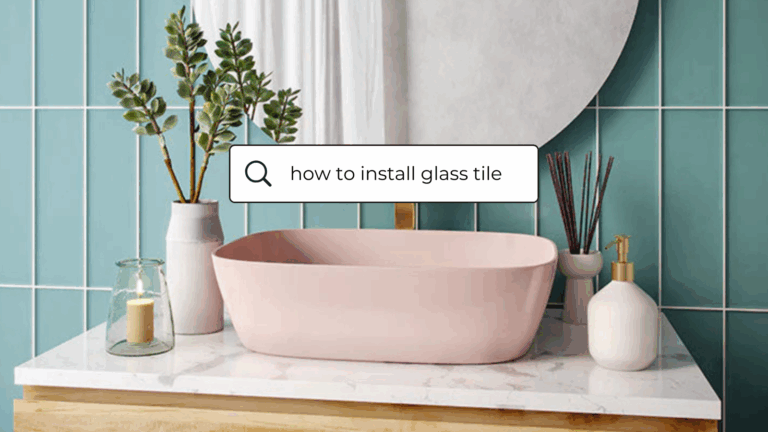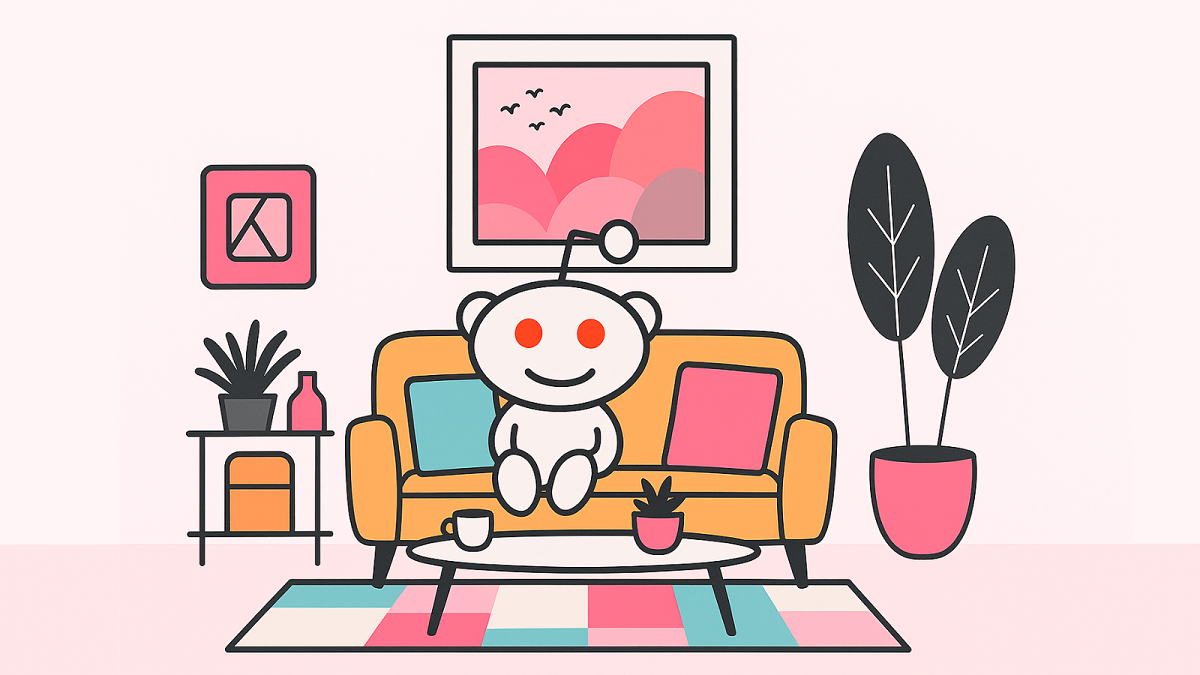As an interior designer, your portfolio is your calling card. But in today’s digital age, it’s not enough to simply have beautiful images of your work online. To truly stand out and attract potential clients, you need to optimize your project features for search engines and social media. Let’s dive into how you can create compelling, SEO-friendly project descriptions that will boost your online visibility and showcase your unique talents.
1. Know Your Audience and Niche
Before you start writing or designing, you must know who you’re creating for. Are your clients art collectors seeking to showcase their pieces in a contemporary setting? Or are they eco-conscious homeowners drawn to biophilic design and sustainable materials? Understanding your audience’s desires and lifestyle informs your design choices and how you communicate your work. For example, a minimalist home might appeal to young professionals, while bold, eclectic interiors resonate with creative entrepreneurs or artists.
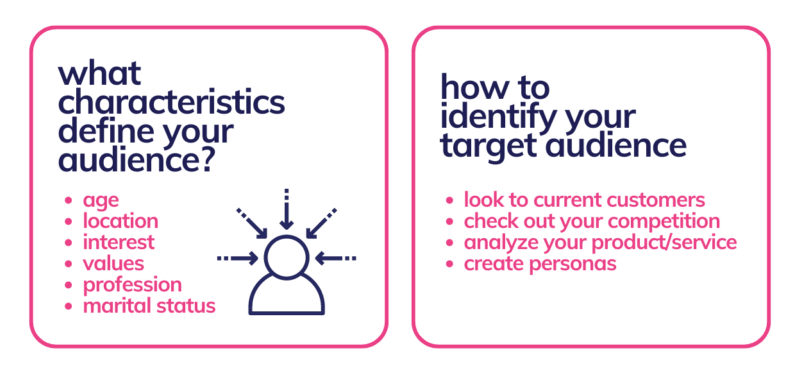
Identifying your niche is not just about aesthetics; it’s about aligning your brand with the right clients and building stronger connections. This process helps you focus on understanding their values, motivations, and needs. As Jeannie Chung of Cozy Stylish Chic, a successful Pasadena designer, blogger, and showroom owner, shared at a recent High Point Market panel, “I have discovered that our ideal client is one who collects art, and I have not put that on our website. But I do need to because I’ve realized that someone who values art will value my time.” This alignment with the right clients gives your work a purpose and helps you build stronger connections.
This revelation led her to adjust her messaging, ensuring she spoke directly to those who would appreciate and invest in her work. When you hone in on your audience, you’re attracting clients and setting the stage for smoother collaborations and higher-value projects.
2. Do Your Keyword Research
Keyword research is the foundation of a successful SEO strategy, especially in the competitive world of interior design. Before creating content for your project pages, you must understand the specific terms your potential clients are searching for. Identifying the right keywords will help you attract the right audience, whether homeowners looking for luxury remodels, architects searching for commercial design inspiration, or eco-conscious clients seeking sustainable materials.
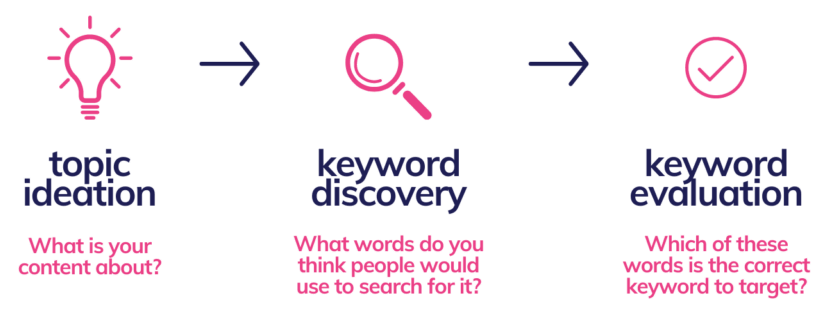
Use tools like Google Keyword Planner, SEMrush, or Ubersuggest to identify relevant keywords within your niche. Find a balance between search volume (how often a keyword is searched) and competition (how many other sites target that term). High search volume keywords seem attractive but usually come with steep competition. Instead, focus on long-tail keywords—more specific but less competitive phrases. For example, instead of targeting “interior design,” which is broad and highly competitive, you might try “modern eco-friendly living room design” or “luxury kitchen remodel in New York.”
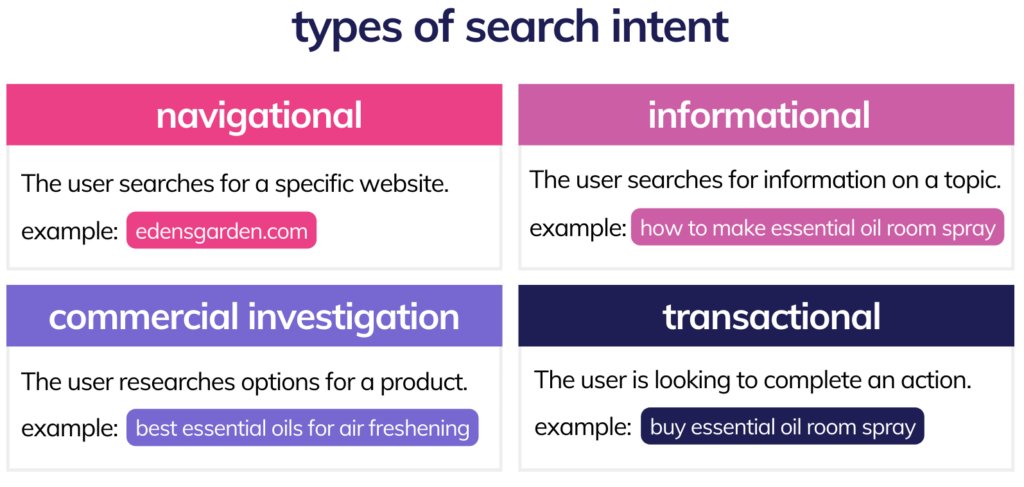
Jim Thornton, SEO expert at Ultraviolet, emphasizes the power of niche keywords: “95% of searches in Google are searched under 10 times per month. That’s where the gold lies—targeting these long-tail keywords that reflect specific user intent.” These niche terms might not generate high traffic individually. Still, collectively, they can drive highly qualified leads to your site—people ready to take action because they’re searching for exactly what you offer.
3. Craft an SEO-Friendly Title
The title of your project page is one of the most important aspects of on-page SEO and user engagement. It’s the first thing potential clients and search engines will see, so crafting a descriptive and enticing title is essential. A well-optimized title helps your project rank higher in search results and attracts clicks by clearly communicating what the user will find on the page.
When creating your title, aim to strike a balance between creativity and clarity. Your goal is to create something that appeals to both human readers and search engines, which means incorporating relevant keywords without sounding too robotic. For example, instead of using a simple and vague title like “Smith Residence,” aim for something more descriptive and keyword-rich, such as “Modern Farmhouse Kitchen Renovation in Los Angeles” or “Eclectic Living Room Design Featuring Sustainable Materials in Austin.” These titles reflect the design style and location and cater to what potential clients might be searching for.
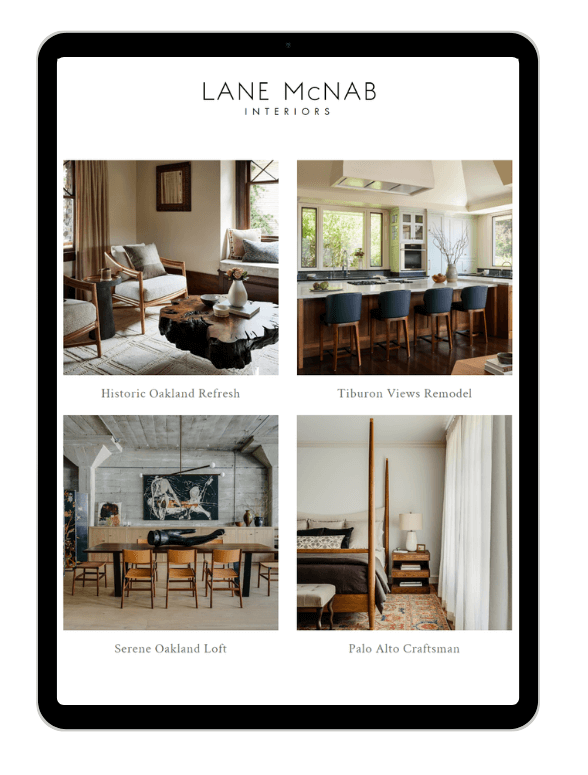
Why an SEO-Friendly Title Matters
Your title tag appears as the clickable headline on search engine results pages (SERPs), so it directly impacts your click-through rate (CTR). Even if you rank well, if your title doesn’t grab attention, you might miss out on valuable traffic. Search engines also use the title to determine the relevance of your page, so including primary keywords is crucial.
For example, a title like “Luxury Coastal Living Room Redesign in Malibu” tells users and search engines exactly what the project is about, where it’s located, and the type of client it might appeal to (those interested in high-end, coastal living). These specifics will help draw in your target audience and improve your chances of ranking well for relevant search queries.
4. Tell the Project’s Story
A project description is more than just a list of tasks—it’s an opportunity to draw your audience into the heart of your work. To truly captivate potential clients, you need to go beyond the surface and tell the story behind the project. Storytelling is a powerful tool in interior design, allowing clients to connect with your work on a personal level. By highlighting the journey—starting with your client’s vision, addressing challenges, and showcasing the unique solutions you provided—you bring the project to life in a way that resonates emotionally.
To begin crafting this narrative, step into your client’s shoes. What were their goals or desires when they first approached you? Were they looking to turn an outdated kitchen into a sleek, modern oasis? Or perhaps they wanted to merge sustainable materials with high-end design? These initial insights form the foundation of the story you’ll tell.
By focusing on the “why” behind your design choices, you not only share the technical aspects of your work but also demonstrate how your decisions align with your client’s lifestyle and needs. This approach helps potential clients see themselves in your projects, imagining how you could transform their spaces in a similar way.
5. Optimize Your Images
High-quality images are essential for any interior design portfolio, but simply uploading beautiful photos to your website is not enough. Proper image optimization is crucial to ensure your images enhance your site’s SEO, improve user experience, and attract potential clients. Optimizing your images goes beyond aesthetics—it’s about making sure they load quickly, rank well in search engines, and are accessible to all users.
Images can significantly impact your website’s performance, from page load speed to search rankings. Google’s algorithm considers page speed when ranking websites, and large, unoptimized images can slow your site down, leading to a poor user experience. Additionally, image search results represent an often-overlooked opportunity to drive traffic. Optimizing your images for both visual appeal and SEO ensures that your designs reach a wider audience.
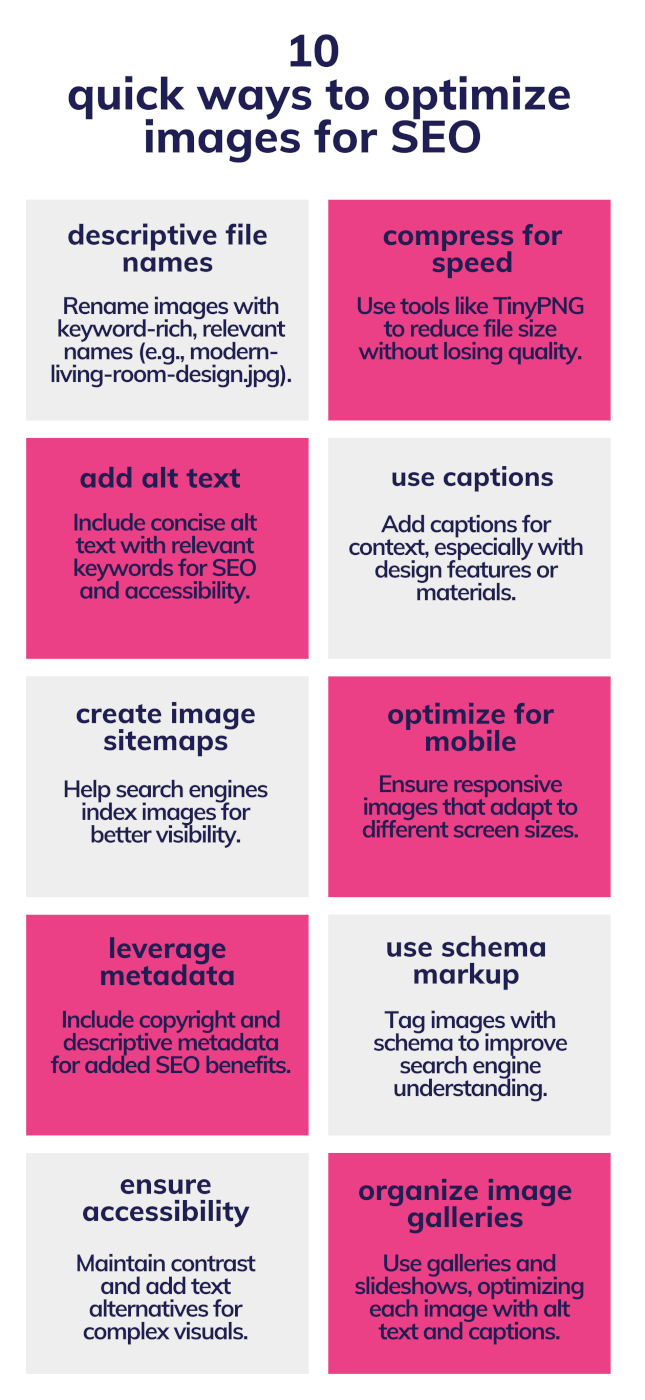
6. Use Header Tags Effectively
Proper use of header tags (H1, H2, H3, etc.) is essential for improving your site’s SEO and enhancing the readability of your content. Header tags help organize your text, making it easier for visitors to follow along and for search engines to understand the structure of your pages. By breaking your content into clear, digestible sections, header tags also create a hierarchy of information that guides users through your project descriptions, blog posts, or case studies in a logical manner.
Why Header Tags Matter
Search engines, such as Google, heavily rely on header tags to decipher the context and relevance of your page’s content. Among these, the H1 tag stands out as it directly signals the page’s main topic to search engines. The use of subheadings (H2, H3, etc.) further structures your content, breaking it into smaller, related sections that not only enhance readability but also contribute to a better user experience.
Header tags also play a crucial role in on-page SEO. They allow you to naturally include keywords important for ranking without overloading your content with unnecessary repetition. By strategically incorporating keywords into your headers, you boost your page’s search visibility while also making it more user-friendly.
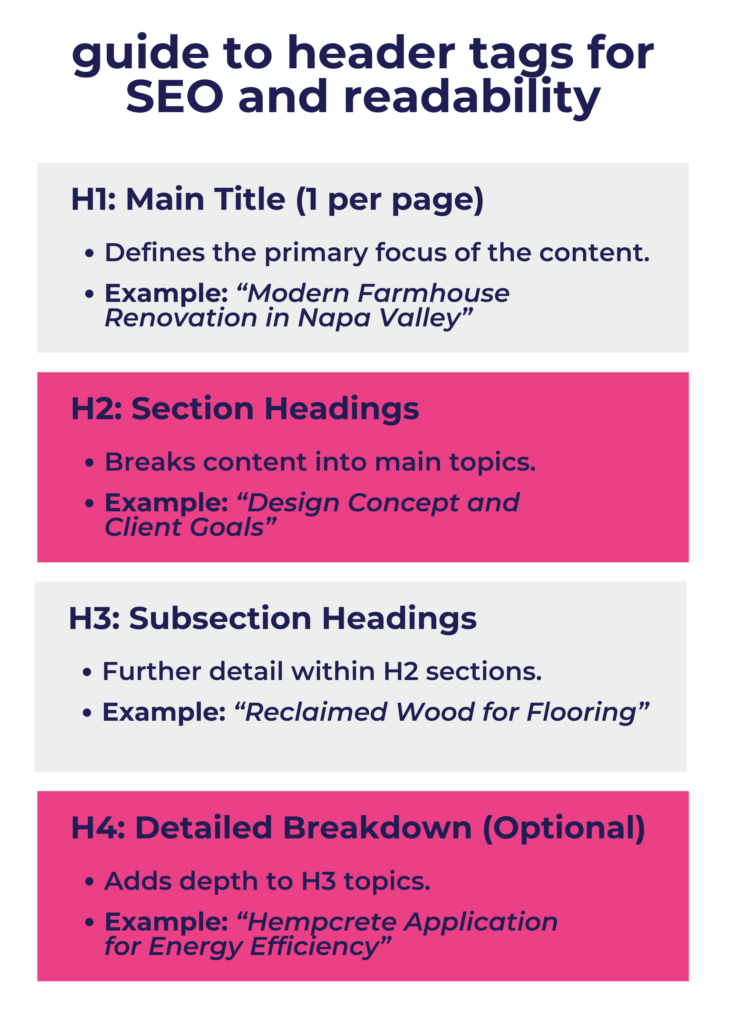
7. Showcase Your Expertise
One of the most powerful ways to attract new clients and build trust is by showcasing your expertise. In the competitive field of interior design, it’s crucial to highlight what sets you apart—whether it’s industry awards, media features, or collaborations with well-known brands. Displaying these achievements on your website and project pages builds credibility with potential clients and signals to search engines that you’re a trusted authority in your niche.
Awards and Recognition
If your work has earned industry awards or accolades, make sure to feature them prominently. Awards can validate the quality of your designs and indicate that you’re a respected professional in your field. Whether you’ve won regional design competitions or received national recognition, these achievements show prospective clients that you have a proven track record of excellence.
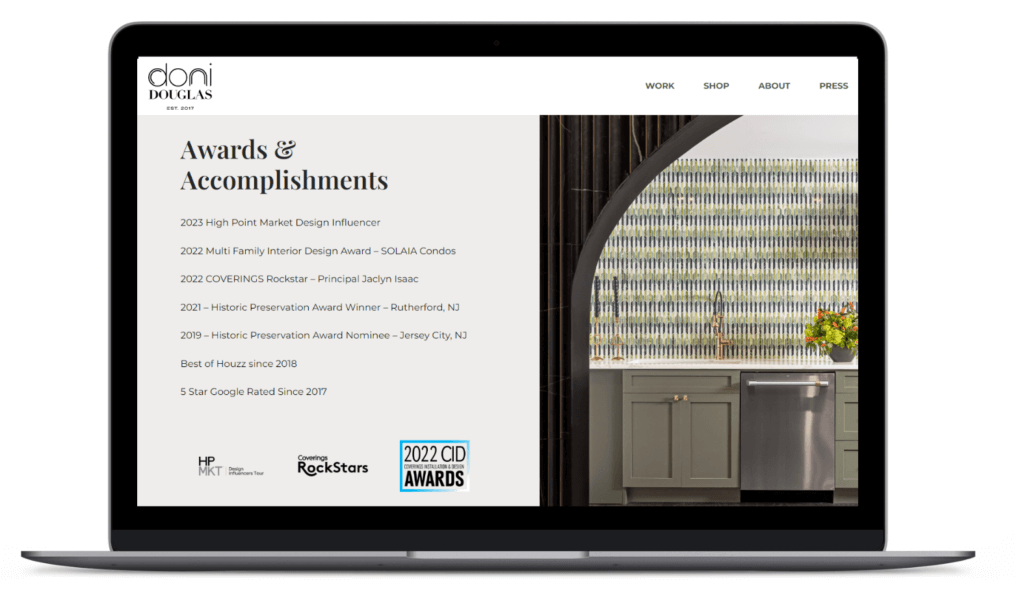
When showcasing awards:
- Add badges or logos of the awards on your homepage or portfolio pages.
- Link to the award’s website or announcement to give the authenticity of your claim.
- Write a short description explaining what the award represents and its significance.
Media Features and Publications
Include in your portfolio any work that has been featured in magazines, blogs, or television shows. Media features add an extra layer of credibility because they show that industry leaders and influencers recognize your work.
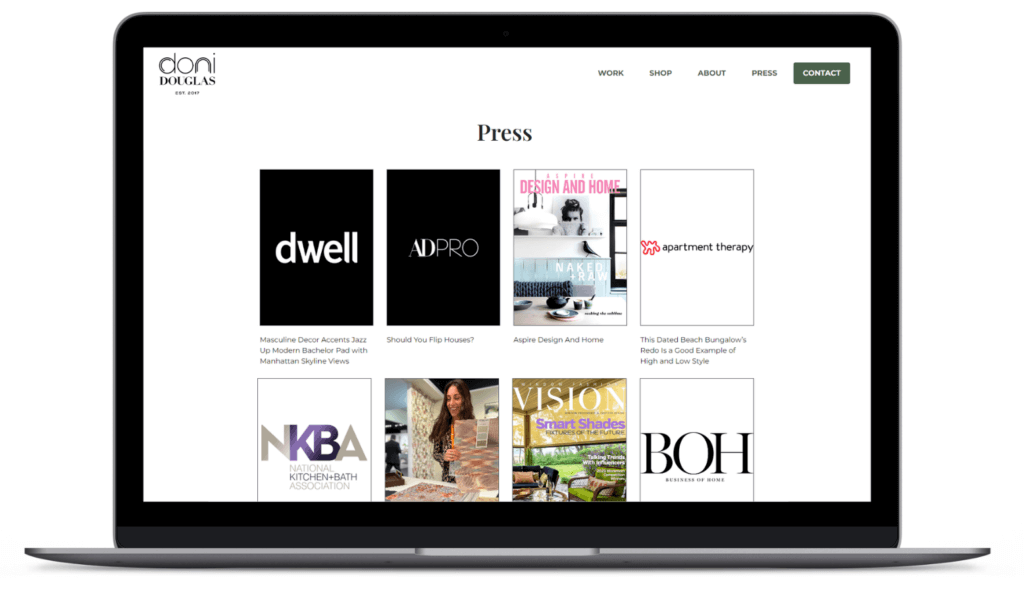
Ways to showcase media features:
- Create a “Press” or “In the News” section on your website to highlight where you’ve been featured.
- Link to articles or videos that feature your work, or embed them directly into your website for easy viewing.
- Display logos of the publications or media outlets to increase visibility and trust.
Case Studies and Client Testimonials
Showcasing Your Expertise case studies are not just stories, they are powerful tools to display your expertise in action. They allow you to tell the story behind your projects and provide real-world examples of how your designs solved specific client challenges. Be sure to include client testimonials, as they offer valuable social proof that reinforces your reputation as a skilled and trusted designer.
When creating a case study:
- Highlight the client’s challenges and how your design met their needs.
- Include measurable outcomes—such as increased functionality, sustainability, or aesthetic appeal.
- Incorporate testimonials from satisfied clients to add personal validation to your work.
8. Optimize for Social Sharing
Optimizing your content for social sharing is essential for increasing visibility and engagement with your interior design projects. To start, create concise, compelling snippets highlighting your project’s key aspects. These short descriptions should capture attention and entice users to learn more. Focusing on standout features or unique design elements makes it easier for your audience to connect with your work. Pair these snippets with high-quality visuals, such as before-and-after photos or stunning transformation shots, ensuring the images are correctly sized for each platform to maximize engagement.
Incorporating relevant hashtags is another powerful way to extend your reach. Use a mix of popular industry hashtags like #InteriorDesign or #HomeDecor and niche-specific ones such as #SustainableDesign or #ModernFarmhouse. Creating a branded hashtag can also build recognition and allow potential clients to explore your broader portfolio. Additionally, adding social sharing buttons to your website encourages visitors to easily share your work across various platforms, boosting your project’s visibility with just one click.
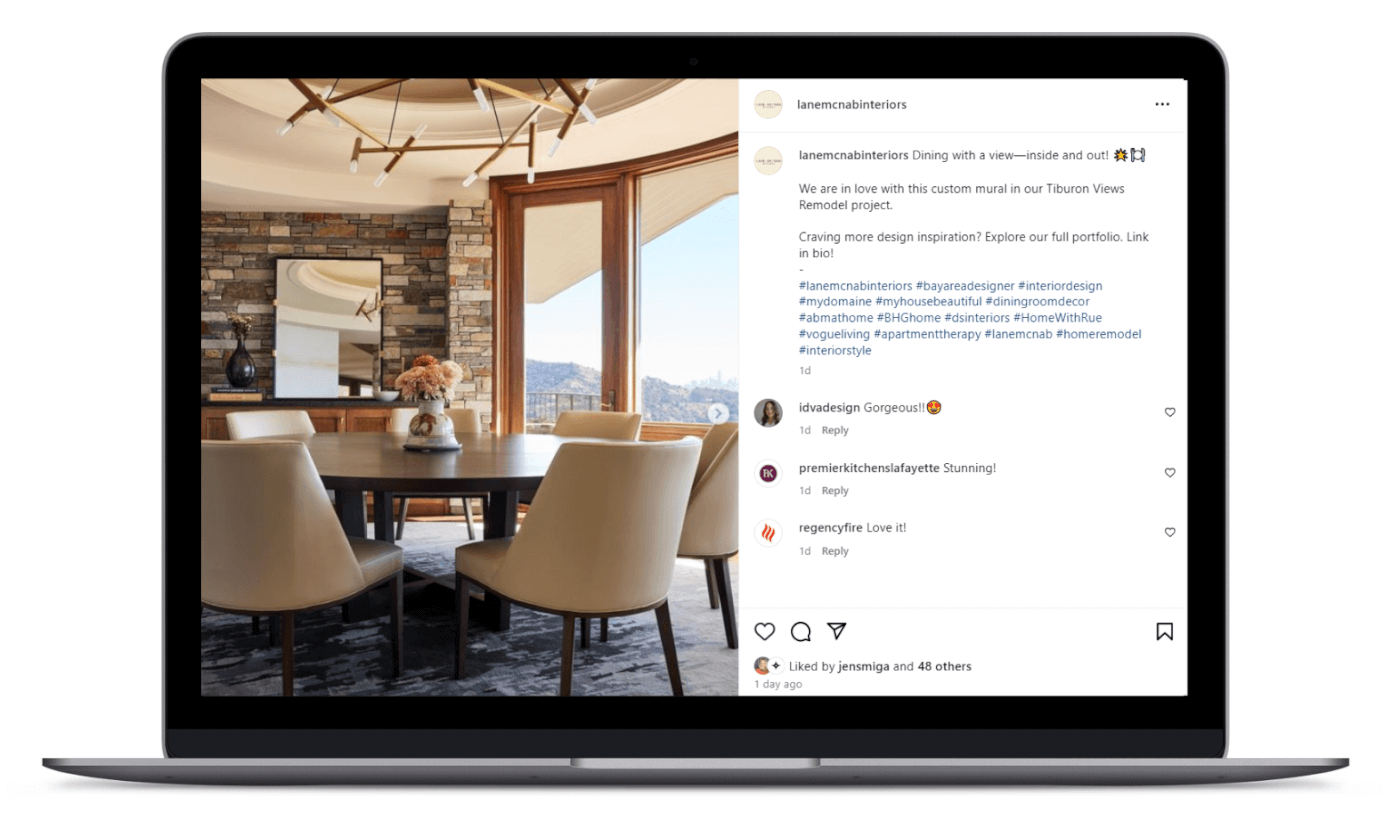
Customizing social media meta tags ensures your content is optimized behind the scenes. This allows you to control the image, title, and description that appear when your content is shared, making your posts more appealing and professional. Once your content is live, monitor its performance using analytics tools to see which platforms and posts drive the most engagement, helping you refine your social sharing strategy over time.
9. Measure and Improve
Regularly measuring the performance of your project pages and content is essential for understanding what resonates with your audience and what needs adjustment. Utilizing analytics tools such as Google Analytics provides comprehensive insights into how visitors interact with your site. By monitoring traffic sources and user behavior and setting up goals, you can gauge the effectiveness of your content and make informed decisions on how to optimize it further.
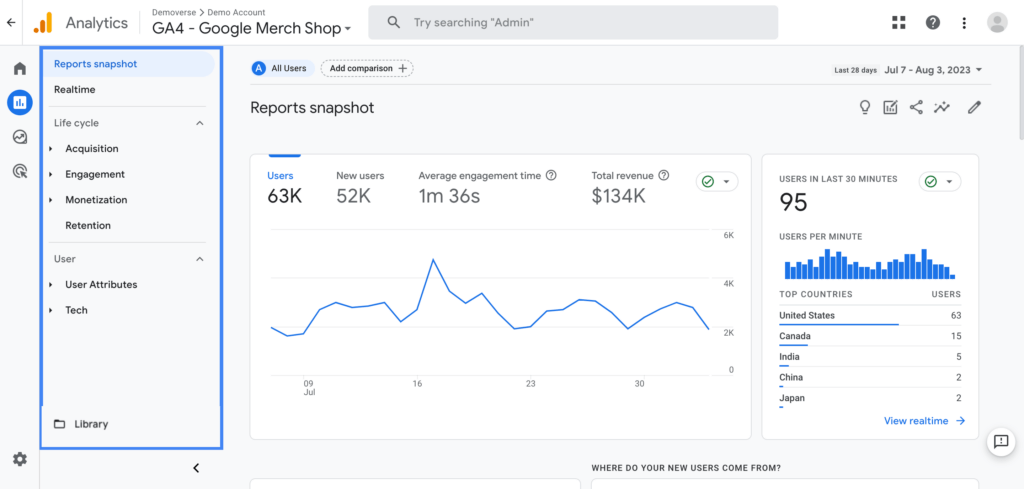
Gathering direct feedback from users provides valuable qualitative insights that complement the quantitative data from analytics tools. Implementing surveys or feedback forms on your website lets you understand user opinions about your content and overall experience. This direct feedback can reveal what users appreciate and what could be improved, helping you tailor your content to better meet their needs.
Social media metrics are another crucial aspect of measuring performance. Each platform offers analytics tools, allowing you to track engagement levels, such as likes, shares, comments, and click-through rates. Analyzing which types of posts generate the most interaction helps you understand what your audience prefers and adjust your content strategy accordingly. For instance, if posts featuring project transformations receive higher engagement, focusing more on transformation stories and visual content could be beneficial.
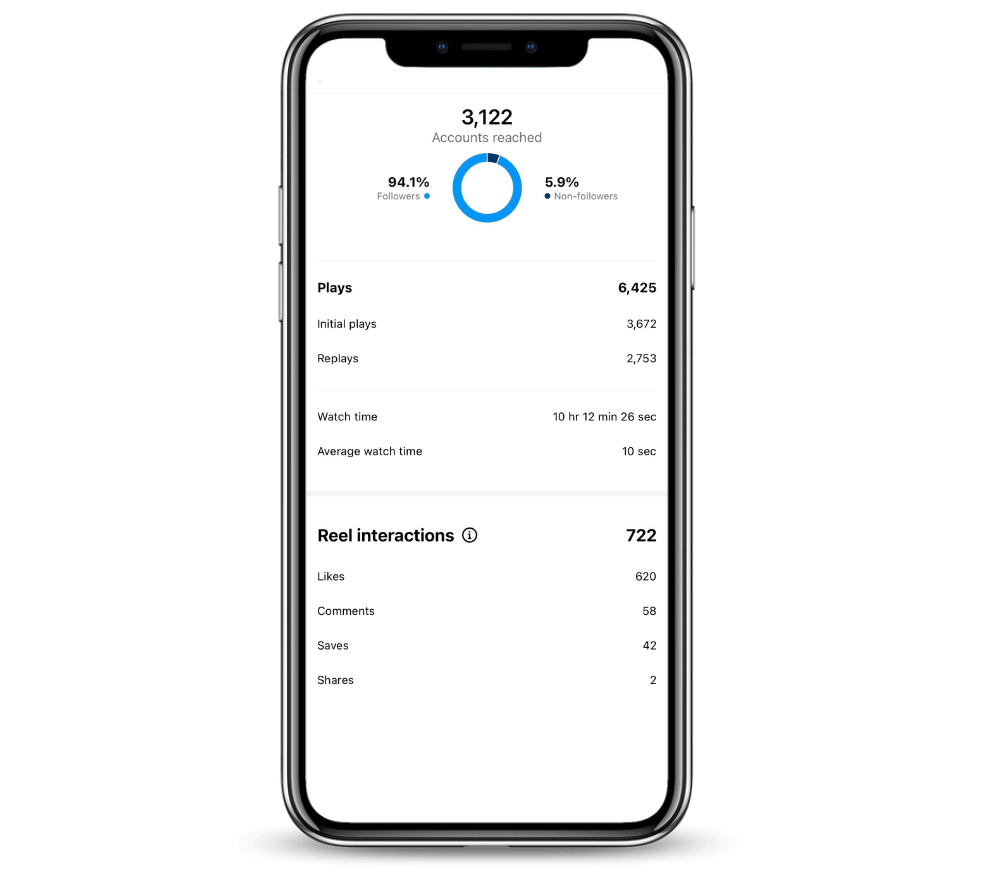
Based on the data collected from these various sources, make informed adjustments to your content and strategies. Optimize underperforming pages by enhancing content, adjusting calls-to-action, or refining images. Adjust your content strategy to focus on what resonates most with your audience. Implement changes incrementally and test their impact, such as A/B testing different headlines or images to see which performs better.
Regular reviews of your analytics and performance metrics ensure you stay updated with trends and continue improving. Set aside time each month or quarter to analyze your data and adjust your strategies based on the latest insights. This ongoing process of measurement and refinement is critical to enhancing your content’s effectiveness, improving user engagement, and attracting more potential clients to your interior design projects.
Creating SEO-optimized project features takes time and effort, but it’s worth it. By following these guidelines, you’ll improve your search engine rankings and create more engaging content that showcases your unique talents and attracts your ideal clients.
Remember, you don’t have to worry about what keywords to rank for. For example, if you are a boho designer in Albuquerque, New Mexico, you want to get that across to Google and ensure they know it.
So, start implementing these strategies in your next project feature. Review and update your existing descriptions. And if you’re feeling overwhelmed by the prospect of implementing these SEO strategies on your own, don’t worry – you’re not alone.

Learn to create SEO-friendly interior design project features that attract clients and boost your online visibility.
content strategy|seo|social media
Content Marketing|Marketing Strategies|social media|Ultraviolet Luxury Marketing Agency
2024-09-20 16:38:14
from-portfolio-to-traffic-9-seo-strategies-for-interior-design-project-features

